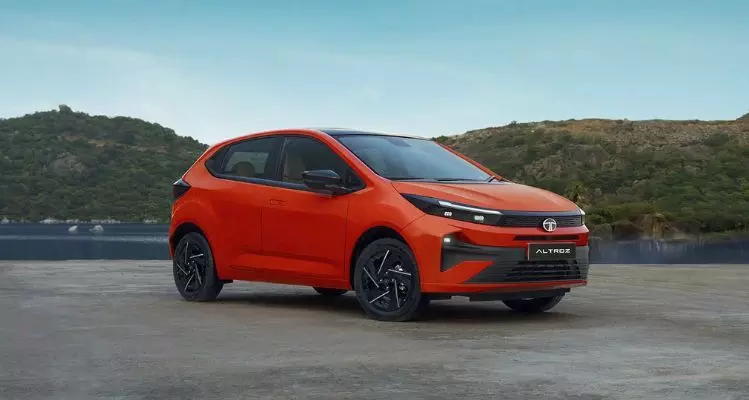Tata Altroz Facelift: Is This Update Enough to Make a Statement in 2025?
The 2025 Tata Altroz facelift offers subtle design updates, upgraded features, and multiple powertrain options. But does it deliver enough to stay relevant in a changing market? Here's our full first drive review.
Tata Altroz Facelift: Is This Update Enough to Make a Statement in 2025?

As SUVs continue to dominate the Indian auto market, climbing the best-seller charts with ease, hatchbacks are fighting for relevance. Tata Motors, despite a strong SUV lineup, hasn’t abandoned this segment. Enter the 2025 Tata Altroz facelift—a premium hatch that now boasts petrol, diesel, and CNG options. But is this new iteration just a cosmetic upgrade, or does it have the substance to truly challenge its competitors?
Let’s break it down.
Design: Familiar Yet Fresh
At first glance, the Altroz facelift might seem like a déjà vu moment, thanks to its close resemblance to its predecessor. But take a closer look, and you’ll spot the refinements—updated headlights, a sharper grille, reworked bumpers, and repositioned fog lamps. These tweaks bring it into 2025 without losing the original’s character. The newly introduced Dune Glow and Ember Glow colours add a fresh vibe to the familiar shape.
From certain angles, the face of the car still has a personality—a slight scowl, perhaps—thanks to the fog lamps that mimic fangs. While the side profile remains largely unchanged, the updated 16-inch alloys and clean design lines help it feel modern.
The rear continues the evolutionary design language with new tail lamps and a slightly sportier bumper. While it may not be a complete redesign, the cohesive updates offer a well-balanced aesthetic.
Interior: A Mix of Upgrades and Excess
Step inside, and the cabin clearly reflects Tata’s attempt to up the ante. The dashboard gets a more complex layout, featuring a new 10.25-inch infotainment system with wireless Apple CarPlay and Android Auto, paired with a crisp digital instrument cluster. A new touch panel for climate controls replaces conventional knobs—stylish, yes, but prone to accidental touches if you’ve got ‘sticky fingers’.
The cabin is brighter thanks to lighter upholstery, and the revised seats offer improved side and thigh support—an upgrade long overdue. There’s also a sliding armrest for the driver, adding comfort to long journeys.
Rear seat passengers benefit from decent head and legroom, along with a foldable armrest and cupholders. While the space is practical, small upgrades like soft-touch materials on the doors or a middle headrest in the rear row could have taken it up a notch.
Boot space in the non-CNG variants stands at 345 litres—enough for four medium-sized bags. The CNG version, with Tata’s twin-cylinder setup, sacrifices some storage but still retains practicality.
Features: Longer List, Better Value
The Altroz facelift comes loaded with an expanded feature list: a sunroof, ambient lighting, air purifier, wireless connectivity, auto-fold ORVMs, voice commands, and more. High-end variants even offer a blind spot monitor and navigation extension on the instrument cluster—features usually reserved for pricier segments.
However, a few things are still missing. Telescopic steering adjustment, an auto-dimming rear-view mirror, and additional premium touches are absent—areas where rivals might hold an edge.
Performance: Same Solid Chassis, Varying Powertrains
We drove the CNG and diesel variants, both mated to manual transmissions. The CNG version runs on a 1.2L three-cylinder engine and delivers acceptable performance for city driving. That said, it lacks punch and could use some refinement. It’s fuel-efficient, though—Tata claims 26.9 km/kg.
Switch to petrol, and there's a marginal improvement in throttle response, but it still doesn’t stand out for driving excitement. Highway performance is underwhelming, and acceleration feels strained above 100 kmph.
The diesel variant—powered by a 1.5L four-cylinder engine—is more energetic. Power delivery is linear but delayed, with some low-speed jerkiness. It settles better above 2,000 rpm but begins to show signs of stress at higher revs. Vibrations and noise creep in, reminding you this isn’t a silent cruiser.
Despite these quirks, ride quality is a strong suit. The Altroz handles rough roads with confidence and stays composed at high speeds. The steering is light at low speeds and gains heft when needed—an asset on highways. However, the transmission could use more polish, as the gear changes occasionally feel sticky.
Verdict: Not Groundbreaking, But Still Competitive
The Tata Altroz facelift brings thoughtful updates to an already solid package. While the exterior tweaks are subtle, the interior tech, added comfort, and expanded feature list make it a better product overall. However, performance—especially on the petrol and CNG variants—could still use refinement.
If you value safety, features, and a solid driving platform in a hatchback, the Altroz continues to deliver. Just don’t expect it to set the segment on fire. With prices ranging from ₹6.89 lakh to ₹11.49 lakh (ex-showroom), the facelifted Altroz remains a compelling choice in its segment—more of a strong contender than a radical game-changer.

